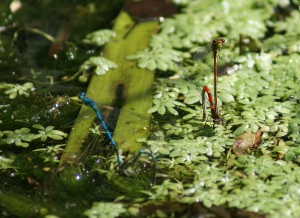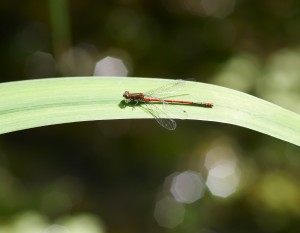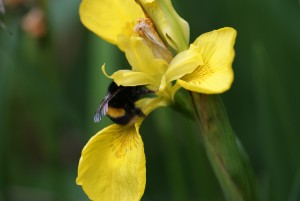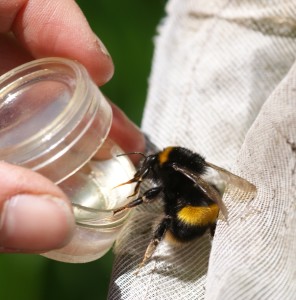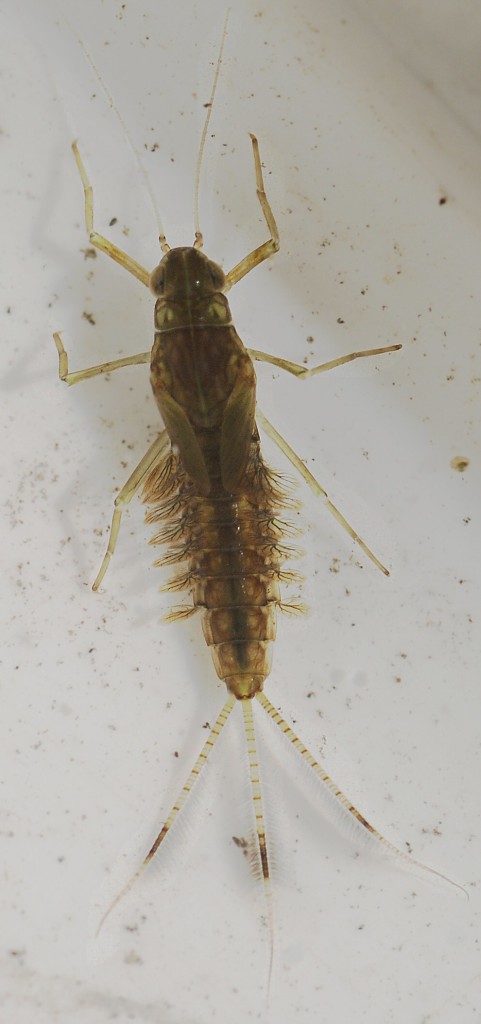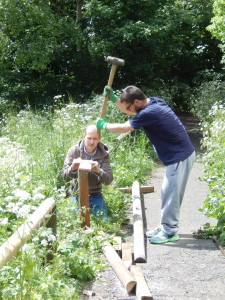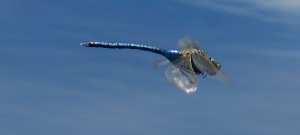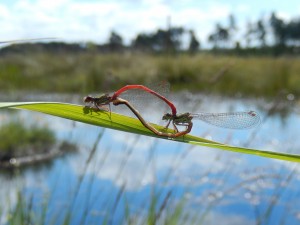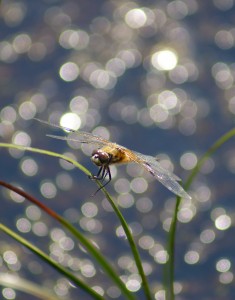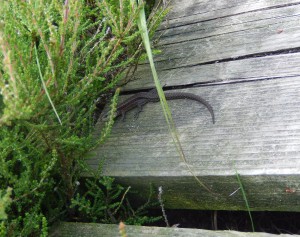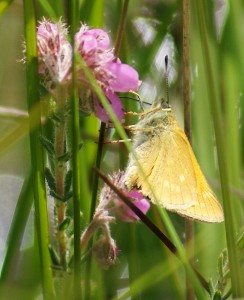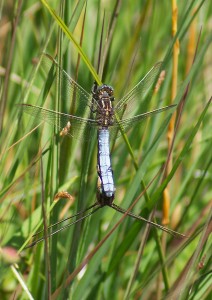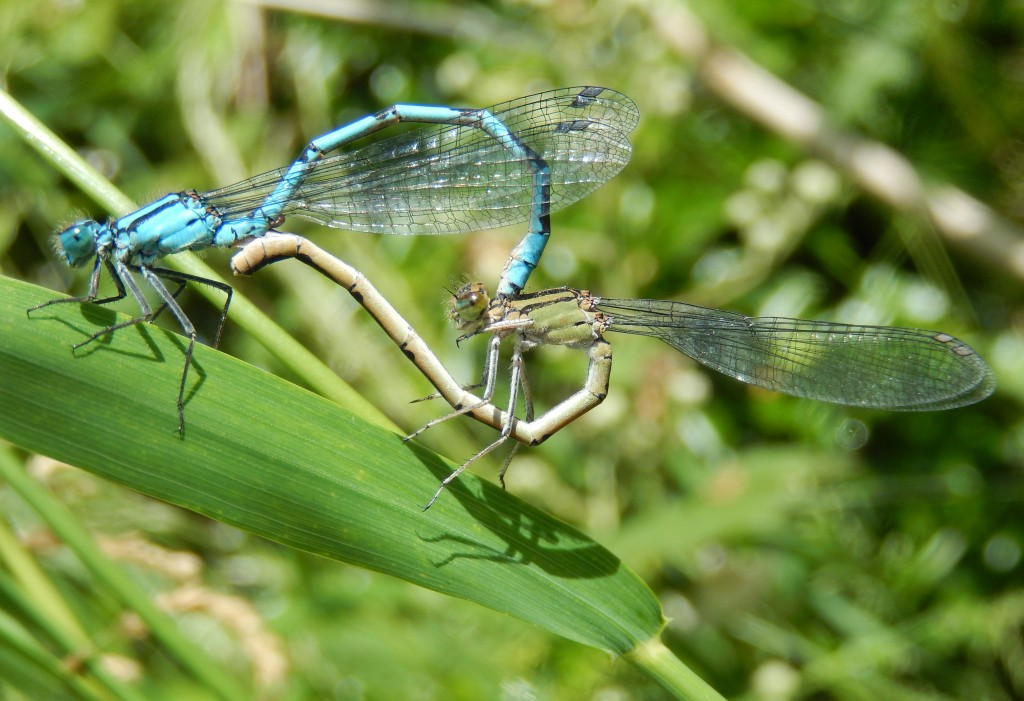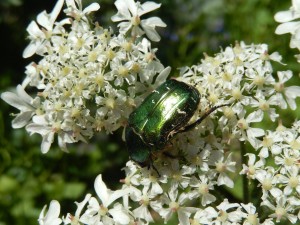
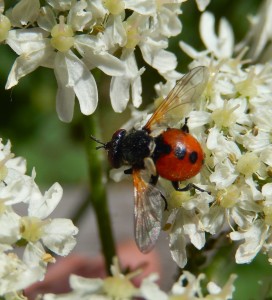
On this lovely hot day, we tried to work, hammering in pegs to fix path edging poles. When we were all a bit dizzy from the heat and effort, we gave up swinging the sledgehammer and had a tea in the hut. Then we did a butterfly transect, which in the absence of anything but Speckled Woods, turned into a nature walk as we photographed all the other interesting insects. The Rose Chafer (on hogweed) is worth looking at full-screen as it’s very pretty.
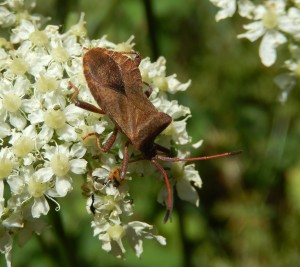
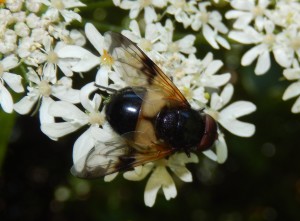
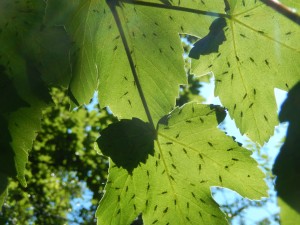
These aphids looked amazing with the sunlight streaming through the leaves; the leaves below were spattered with sticky sugar dropped by the aphids.
There was a beautiful Click Beetle too (like Athous haemorrhoidalis) but I didn’t photograph it as we were having too much fun making it go click and jump out of our hands.
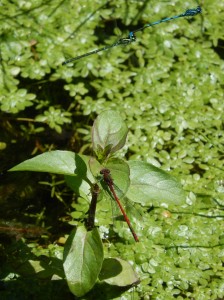
See the Red damselfly? Look up: there’s a pair of Azure damselflies hovering above. Well worth viewing full screen.
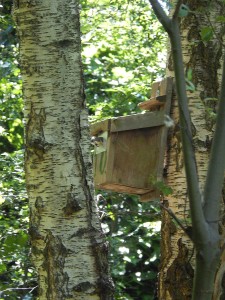
We were pleased (and somewhat surprised) to find a family of Great Tits in box 10, right beside the path, and not terribly high up either, but it was an old and presumably proven nest-site, and so it has proven again this year. I got a blurry photo of one of the proud parents entering the hole, which I had repaired with some aluminium sheet this winter.
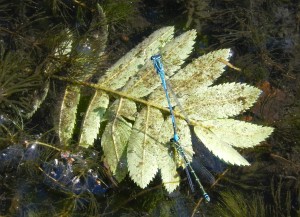
I was very pleased with this photo, with its surreal light and bubbles. I’ve not remarked the green female morph before: most Azure females seem to be a paler, more lime-green form.
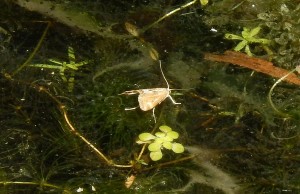
This last photo (taken at quite a distance) shows something very curious: the Brown China Mark, a micro moth that lays its eggs on pondweeds, scurrying over the surface of the water searching for suitable ovipositing sites. In the dazzling light, she was far more reflective than anything else, and I had to turn the exposure down two whole stops to get her about right. The larva is aquatic, feeding on pondweeds.
Not pictured: sawflies; a swift Ichneumon beside the pond (without a long ovipositor, but with a clearly clubbed abdomen); many bumblebees and striped hoverflies. Nests of Peacock butterfly caterpillars too.

